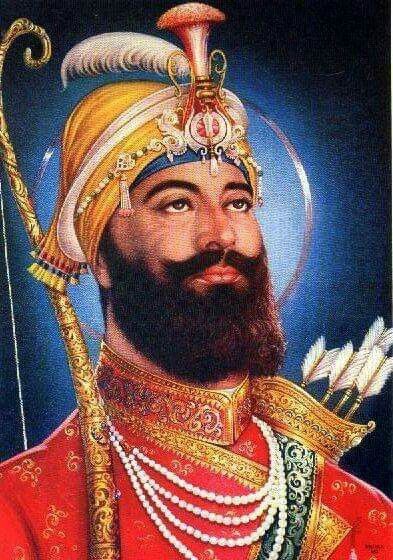Guru Gobind Singh : The 10th Sikh Guru and His Legacy
Introduction
Sikh religion’s final human guru, Guru Gobind Singh, was born in Patna, Bihar, on December 22, 1666. In the wake of his father Guru Tegh Bahadur’s martyrdom, he took over as Sikh leader when he was just nine years old. Extreme courage, intelligence, and spiritual profundity were hallmarks of his life. The Khalsa and the Guru Granth Sahib, the Sikhs’ everlasting Guru, were both created by Guru Gobind Singh, who is highly esteemed for his contributions to Sikhism.
Early Life and Education
Mata Gujri and Guru Tegh Bahadur welcomed their son, who was previously called Gobind Rai, into the world. His famously devout father opposed the religious persecution of the Mughal emperor Aurangzeb. Gobind Rai had remarkable brilliance and an in-depth familiarity with sacred scriptures from an early age. He spoke Punjabi fluently as well as Persian, Arabic, and Sanskrit.
Guruship and Contributions
Gobind Rai was officially enthroned as the tenth Sikh Guru in 1675, following his father’s execution. After assuming the identity of Guru Gobind Singh, he set out to fortify the Sikh faith. The establishment of the Khalsa in 1699 was one of his major achievements. Initiated Sikhs who have vowed to protect and defend the Sikh faith are known as the Khalsa.
The Creation of the Khalsa
The establishment of the Khalsa ranks high among the most joyous occasions in Sikh history. A huge assembly of Sikhs was summoned by Guru Gobind Singh at Anandpur Sahib on March 30, 1699. He issued a call for believers ready to give their life for the cause. Guru Gobind Singh led five guys inside a tent when they came forward. Upon his return, he brandished a bloodstained blade. He proclaimed the five men to be the Panj Pyare, or “the five beloved ones,” after they had been admitted into the Khalsa. The Khalsa, a group of Sikh faith-loving warriors, were born at this ritual.

The Five Ks
Guru Gobind Singh also introduced the Five Ks, which are five articles of faith that Khalsa Sikhs are required to wear at all times. These are:
- Kesh: Uncut hair, symbolizing holiness and strength.
- Kanga: A wooden comb, representing cleanliness and order.
- Kara: An iron bracelet, signifying unity and eternity.
- Kachera: Cotton undergarments, symbolizing self-control and chastity.
- Kirpan: A ceremonial sword, representing the duty to protect the weak and fight against injustice.
Literary Contributions
Guru Gobind Singh wrote much in addition to his spiritual leadership. He wrote numerous poetry and hymns that are part of the Dasam Granth, the holy book of Sikhism. Among the many subjects addressed in his works are those of philosophy, religion, and martial arts. Writing a letter to the Mughal emperor Aurangzeb following the Battle of Chamkaur, in which he voiced his displeasure and called for justice, he composed one of his most renowned works, the Zafarnama.
Martial Prowess and Battles
Guru Gobind Singh has martial prowess as well. Against the Mughals and hill tribes, he led the Sikh army in multiple battles. The Battles of Bhangani, Nadaun, and Chamkaur are among the most famous conflicts in which he participated. He led military expeditions with the dual goals of defending the Sikh community and ensuring its religious freedom, in addition to acquiring territory.
The Legacy of Guru Gobind Singh
Guru Gobind Singh left an enormous legacy. He made the Sikh faith more militant and organized so that its adherents could protect themselves from outside influences. His lessons centered on the value of giving one’s all for the greater good. After his death, the Sikh community will continue to follow his teachings through the Guru Panth, an idea he also introduced.
Conclusion
Guru Gobind Singh, born on December 22, 1666, was the tenth and last Sikh Guru. He became the leader of the Sikhs at the age of nine, following the martyrdom of his father, Guru Tegh Bahadur. His life was marked by bravery, intellectual prowess, and spiritual depth. He is revered for his contributions to Sikhism, including the creation of the Khalsa and the finalization of the Guru Granth Sahib as the eternal Guru of the Sikhs.
Gobind Rai was a spiritual leader who stood up against religious persecution by the Mughal emperor Aurangzeb. He was well-versed in Persian, Arabic, Sanskrit, and Punjabi. In 1675, he was formally installed as the tenth Sikh Guru and began his mission to strengthen the Sikh community. One of his most significant contributions was the creation of the Khalsa in 1699, a community of initiated Sikhs committed to upholding the principles of Sikhism and defending the faith.
Guru Gobind Singh was also a prolific writer, composing hymns and poems that are included in the Dasam Granth, a sacred text of Sikhism. His military campaigns were aimed at protecting the Sikh community and upholding their religious freedom. His legacy is immense, transforming Sikhism into a more organized and militant community, promoting equality, justice, and self-sacrifice.







